REJG ransomware emerges as yet another copy of STOP/DJVU virus
Contents
REJG ransomware is a file-encrypting computer virus originating from STOP/DJVU malware family. Being the 295th variant of the infamous virus, it scans all folders on the compromised computer and encrypts target files using RSA algorithm, adding .rejg extension after the original one. As a result, file called 1.jpg becomes 1.jpg.rejg after the cyber attack. The virus’ operators also make the malware drop a ransom note called _readme.txt in every folder. This note contains brief instructions from the attackers on how to decrypt locked data. According to the note, the only way to restore files is to pay the cyber extortionists a ransom ranging from $490 to $980 in Bitcoin. To get details on money transfer, the note suggests writing to helpteam@mail.ch or helpmanager@airmail.cc.
_readme.txt file begins by stating that all important files have been encrypted with the strongest algorithm. This includes documents, photos, videos, databases and other files. The note suggests that victim can restore files very quickly if one decides to purchase the suggested REJG file decryption tool from virus’ authors. To do it, the victim has to contact them first. Depending on how fast the victim writes to the criminals and pays, the criminals might offer a 50% discount on the initial ransom price, resulting in $490 price. The attackers specify that they want to receive the money in cryptocurrency, as this helps to ensure their privacy. In this scenario, the victim needs to purchase some cryptocurrency for the said amount and transfer it to specified virtual wallet address.

The ransom note even suggests testing the offered decryption tool for free – the victim has to send one small encrypted file to them (as well as the victim’s personal ID included in the _readme.txt note) and the crooks promise to send a restored file version back. This “test” is offered as a proof that the criminals actually can decrypt REJG files for the victim, and convince one to pay up. Sadly, paying the ransom isn’t an option according to cybersecurity experts and even FBI due to the following reasons:
- Paying the ransom might be considered illegal in your country;
- Just because you decide to pay the ransom, that doesn’t mean that cybercriminals will be willing to communicate after getting what they want;
- The tool provided by the cybercriminals might not work and appear to be faulty due to problems on their or your end (such as modification of files or the tool itself);
- Do not pay money to criminals as this simply fuels this illegal business model, convincing other people to join it. The fact that ransomware operators collect millions in ransoms each year simply proves what makes them continue these illegal activities;
- STOP/DJVU variants reportedly install variant of AZORULT Trojan (sensitive-data stealer) which can grab details that could possibly lead to financial or private data loss. Do you really want to pay someone who installs this behind your back and won’t mention it in the note dropped on your computer?
Ransomware damage explained
Once installed, REJG ransomware begins scanning entire target computer system, looking for target file format examples and encrypting them. For encryption, this ransomware uses a complex algorithm that is typically used to secure military-grade secrets. Once virus converts files into a pile of inaccessible data, it also deletes Volume Shadow Copies (to prevent easy data recovery for the victim using Windows in-built tools) and modifies Windows HOSTS file that is used to restrict domain access for the computer. As a result, the victim will fail to access various computer-related websites when looking for help online after the attack. It is believed that the criminals used this measure to make the victim panic even more and do anything it takes (pay the ransom) to get the computer back to the healthy state.
As mentioned previously, another illegal task completed by this ransomware is installation of AZORULT Trojan. It is a powerful virus that can be used as a remote access tool to perform a list of commands on the infected host, such as stealing various types of information, including, but not limited to:
- Browser-related data such as cookies, saved passwords and browsing history;
- Cryptocurrency wallets;
- Steam and Telegram login credentials.
Additionally, the Trojan may be used to view, download or delete files from the compromised host. For this reason, we recommend you to take actions and remove REJG ransomware virus along other malware as soon as possible. Upon removal of the malware, we suggest downloading and running RESTORO to repair virus damage on Windows OS files.
Scan your system for FREE to detect security, hardware and stability issues. You can use the scan results and try to remove threats manually, or you can choose to get the full version of software to fix detected issues and repair virus damage to Windows OS system files automatically. Includes Avira spyware/malware detection & removal engine.
Ransomware Summary
| Name | REJG Ransomware Virus |
| Type | Ransomware; Crypto-malware; Virtual Extortion Virus |
| Family | STOP/DJVU |
| Previous versions | JYPO, KIFR, KIOP, KITZ, BOZA, BOTY, COZA (find full list here) |
| Version | 295th |
| Extension | .rejg |
| Damage | This ransomware uses RSA algorithm to encrypt all files on target computer. During the attack, virus appends additional extension to infected files to mark them. Finally, it eliminates system restore points (VSS) to prevent victim from restoring data easily. Lastly, the ransomware modifies Windows HOSTS file to block access to a set of websites. |
| Ransom note | _readme.txt |
| Ransom demand | $490-$980 in Bitcoin |
| Distribution | This ransomware typically hides in illegal torrent downloads, such as cracked software versions or KMSPico. |
| Detection names | Trojan:Win32/Glupteba (Microsoft), Glupteba.Backdoor.Bruteforce.DDS (Malwarebytes), TR/AD.InstaBot.bfsbw (Avira), HEUR:Exploit.Win32.Shellcode.gen (Kaspersky), Trojan.GenericKD.36669904 (B)(Emsisoft), W32.Trojan.Gen (Webroot) see all detection name variations on VirusTotal |
| Removal | Remove the ransomware using malware removal software, then we strongly recommend scanning with RESTORO to repair virus damage on Windows OS files. |
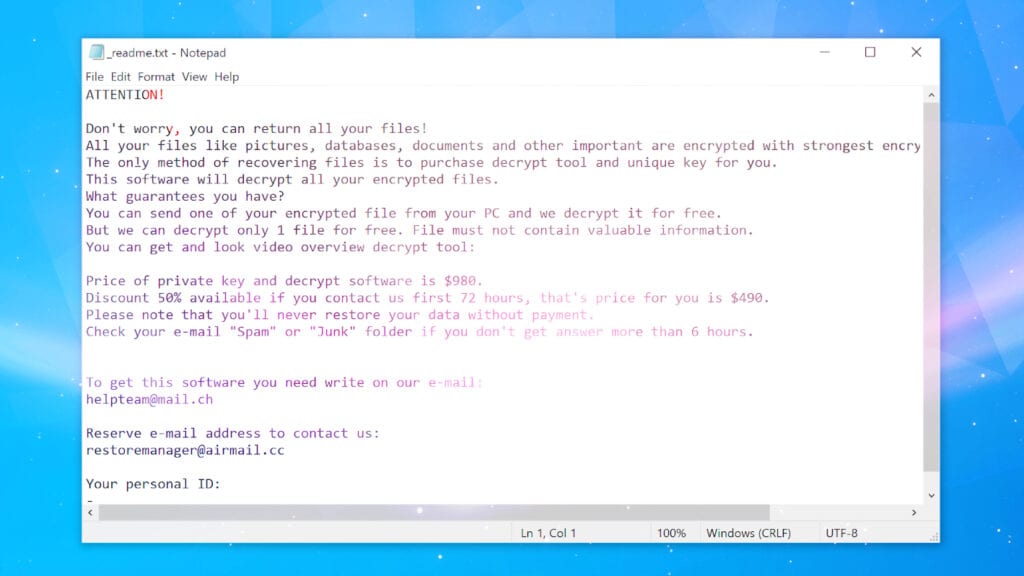
Avoid ransomware: learn common distribution tactics
REJG ransomware is part of STOP/DJVU virus family and therefore it is distributed using same technique as previous versions – this and previous variants can be found in illegal torrent downloads mainly. Victims often report downloading the ransomware via software crack that seemed safe at the first sight. After attempt to install desired software for free, the disguised malware connects to a remote server and downloads the actual payload. What is even worse is that typical security programs tend to display alarms about software cracks as these are well-known to deliver all kinds of malware, but victims tend to ignore these warnings. Most of the time, users think these are false-positive alerts and there is nothing to worry about. This is the reason why illegal peer-to-peer downloads are so successful in infecting a large number of computers – because users are willing to install paid software for free and even ignore security software’s warnings.

If you want to avoid downloading untrusted file, make sure you always opt for legitimate and well-known sources to download files from. Try to avoid illegal file sharing networks at all costs – it is better to purchase software from an official source and we can assure you – it most likely costs less than a hefty ransom that cyber crooks will demand after ruining your files.
Speaking of other popular ransomware distribution techniques, it is simply a must to mention malicious email spam. This technique is also very popular among cybercriminals. The attackers can inject malicious script into a wide range of files, name them as “invoice.pdf” or another name indicating an important document and send it as an attachment along with a well-crafted and convincing message. Moreover, attackers often try to exploit relevant topics nowadays. For example, as more and more people shop online nowadays, they might try to pretend to be representatives of parcel delivery companies, suggesting to view pending/missing payment or track parcel. For this reason, it is important to be very careful and inspect the email before interacting with its contents – either opening the attachments or links included. Please also note that the attackers can use email spoofing techniques to make the sender’s email address appear legitimate.
Finally, all victims of ransomware should be very careful as ransomware operators are luring potential victims by offering fake STOP/DJVU DECRYPTORS that deliver other strains of ransomware such as Zorab. When such tool appears, it for sure will be available on well-known cybersecurity-related websites! If there are none, do not explore suspicious-looking sites, no matter what they promise you!
Remove REJG ransomware virus and try to repair part of your files
You should remove REJG ransomware virus as soon as possible to secure your computer and avoid any further infections, especially with Azorult’s existence on your PC. The instructions provided below will guide you through safe malware removal procedure. However, we strongly recommend using automatic malware removal tool along with RESTORO for virus damage repair.
Once REJG virus removal is done, we highly recommend following the rest of the tutorial which explains how to report cybercrime incident and repair part of your files.
OUR GEEKS RECOMMEND
Our team recommends a two-step rescue plan to remove ransomware and other remaining malware from your computer, plus repair caused virus damage to the system:
GeeksAdvice.com editors select recommended products based on their effectiveness. We may earn a commission from affiliate links, at no additional cost to you. Learn more.
REJG ransomware virus Removal Guidelines
Method 1. Enter Safe Mode with Networking
Step 1. Start Windows in Safe Mode with Networking
Before you try to remove REJG ransomware virus virus, you must start your computer in Safe Mode with Networking. Below, we provide the easiest ways to boot PC in the said mode, but you can find additional ones in this in-depth tutorial on our website – How to Start Windows in Safe Mode. Also, if you prefer a video version of the tutorial, check our guide How to Start Windows in Safe Mode on Youtube.
Instructions for Windows XP/Vista/7 users
- First of all, turn off your PC. Then press the Power button to start it again and instantly start pressing F8 button on your keyboard repeatedly in 1-second intervals. This launches the Advanced Boot Options menu.
- Use arrow keys on the keyboard to navigate down to Safe Mode with Networking option and press Enter.

Instructions for Windows 8/8.1/10/11 users
- Open Windows Start menu, then press down the Power button. On your keyboard, press down and hold the Shift key, and then select Restart option.

- This will take you to Windows Troubleshoot screen. Choose Troubleshoot > Advanced Options > Startup Settings > Restart. Tip: If you can't find Startup Settings, click See more recovery options.

- In Startup Settings, press the right key between F1-F9 to enter Safe Mode with Networking. In this case, it is the F5 key.

Step 2. Remove files associated with the virus
Now, you can search for and remove REJG ransomware virus files. It is very hard to identify files and registry keys that belong to the ransomware virus, Besides, malware creators tend to rename and change them repeatedly. Therefore, the easiest way to uninstall such type of a computer virus is to use a reliable security program such as INTEGO Antivirus. For virus damage repair, consider using RESTORO.
Special Offer
Compatibility: Microsoft Windows
See Full Review
RESTORO is a unique PC Repair Tool which comes with an in-built Avira scan engine to detect and remove spyware/malware threats and uses a patented technology to repair virus damage. The software can repair damaged, missing or malfunctioning Windows OS files, corrupted DLLs, and more. The free version offers a scan that detects issues. To fix them, license key for the full software version must be purchased.
Method 2. Use System Restore
In order to use System Restore, you must have a system restore point, created either manually or automatically.
Step 1. Boot Windows in Safe Mode with Command Prompt
Instructions for Windows XP/Vista/7 users
- Shut down your PC. Start it again by pressing the Power button and instantly start pressing F8 button on your keyboard repeatedly in 1-second intervals. You will see Advanced Boot Options menu.
- Using arrow keys on the keyboard, navigate down to Safe Mode with Command Prompt option and press Enter.

Instructions for Windows 8/8.1/10/11 users
- Launch Windows Start menu, then click the Power button. On your keyboard, press down and hold the Shift key, and then choose Restart option with the mouse cursor.

- This will take you to Windows Troubleshoot screen. Choose Troubleshoot > Advanced Options > Startup Settings > Restart. Tip: If you can't find Startup Settings, click See more recovery options.

- In Startup Settings, press the right key between F1-F9 to enter Safe Mode with Command Prompt. In this case, press F6 key.

Step 2. Start System Restore process
- Wait until system loads and command prompt shows up.
- Type cd restore and press Enter, then type rstrui.exe and press Enter. Or you can just type %systemroot%system32restorerstrui.exe in command prompt and hit Enter.

- This launches System Restore window. Click Next and then choose a System Restore point created in the past. Choose one that was created before ransomware infection.

- Click Yes to begin the system restoration process.
After restoring the system, we recommend scanning the system with antivirus or anti-malware software. In most cases, there won't be any malware remains, but it never hurts to double-check. In addition, we highly recommend checking ransomware prevention guidelines provided by our experts in order to protect your PC against similar viruses in the future.
Alternative software recommendations
Malwarebytes Anti-Malware
Removing spyware and malware is one step towards cybersecurity. To protect yourself against ever-evolving threats, we strongly recommend purchasing a Premium version of Malwarebytes Anti-Malware, which provides security based on artificial intelligence and machine learning. Includes ransomware protection. See pricing options and protect yourself now.

System Mechanic Ultimate Defense
If you're looking for an all-in-one system maintenance suite that has 7 core components providing powerful real-time protection, on-demand malware removal, system optimization, data recovery, password manager, online privacy protection and secure driver wiping technology. Therefore, due to its wide-range of capabilities, System Mechanic Ultimate Defense deserves Geek's Advice approval. Get it now for 50% off. You may also be interested in its full review.

Disclaimer. This site includes affiliate links. We may earn a small commission by recommending certain products, at no additional cost for you. We only choose quality software and services to recommend.
Decrypt REJG files
Fix and open large REJG files easily:
It is reported that STOP/DJVU ransomware versions encrypt only the beginning 150 KB of each file to ensure that the virus manages to affect all files on the system. In some cases, the malicious program might skip some files at all. That said, we recommend testing this method on several big (>1GB) files first.
- Create a copy of encrypted file to a separate folder using Copy > Paste commands.
- Now, right-click the created copy and choose Rename. Select the REJG extension and delete it. Press Enter to save changes.
- In the prompt asking whether you want to make the changes as file might become unusable, click OK.
- Try opening the file.
STOP/DJVU decryption tool usage guide
STOP/DJVU ransomware versions are grouped into old and new variants. REJG ransomware virus is considered the new STOP/DJVU variant, just like JYPO, KIFR, KIOP, KITZ, BOZA, BOTY, COZA (find full list here). This means full data decryption is now possible only if you have been affected by offline encryption key. To decrypt your files, you will have to download Emsisoft Decryptor for STOP DJVU, a tool created and maintained by a genius security researcher Michael Gillespie.
Note! Please do not spam the security researcher with questions whether he can recover your files encrypted with online key - it is not possible.
In order to test the tool and see if it can decrypt REJG files, follow the given tutorial.
- Download the decryption tool from Emsisoft.
- Click the little arrow next to your download and choose Show in Folder.
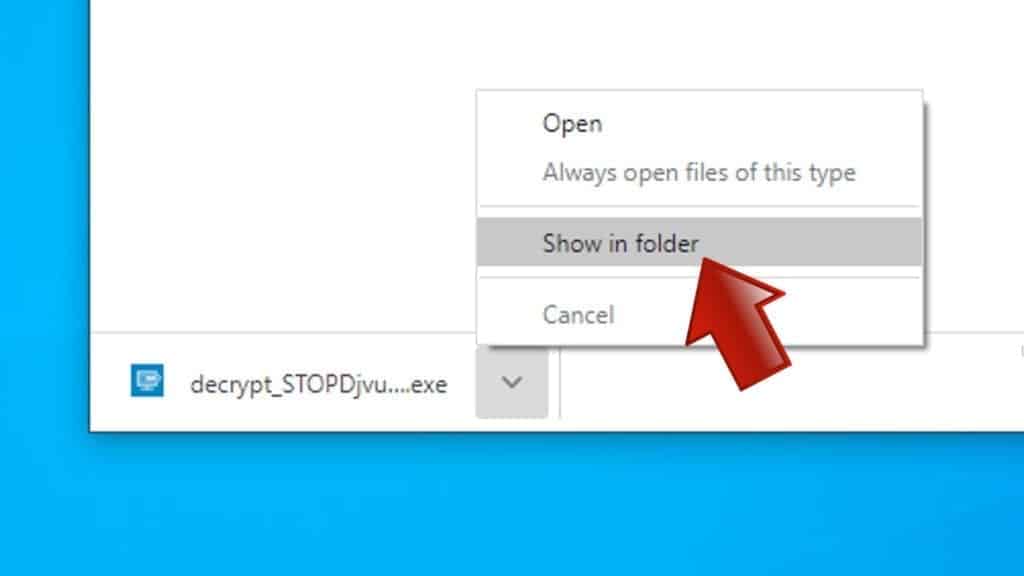
- Now, right-click the file and choose Run as Administrator. If asked, enter administrator's password.
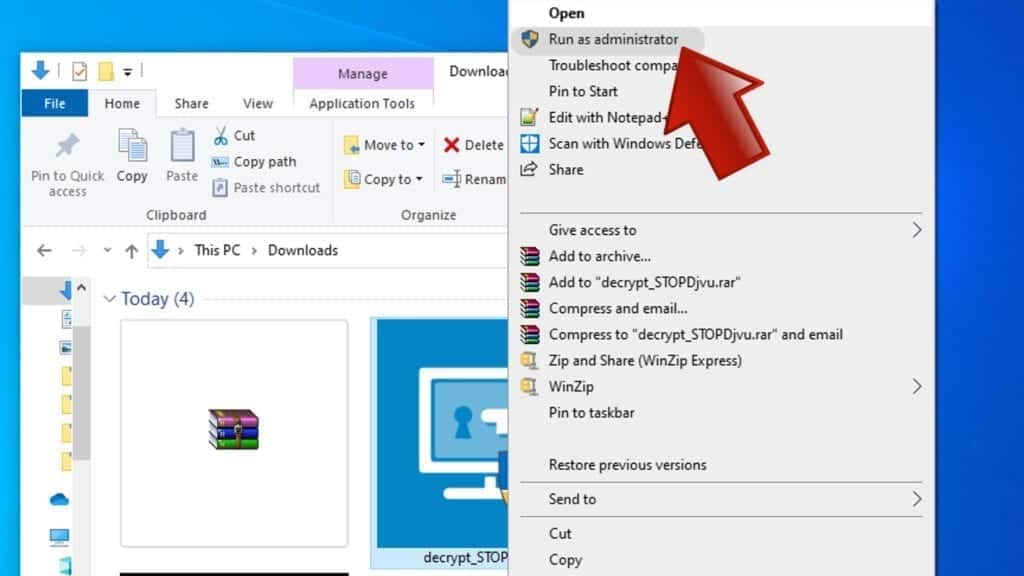
- In UAC window, click Yes.
- Click Yes to agree to software terms in both windows.
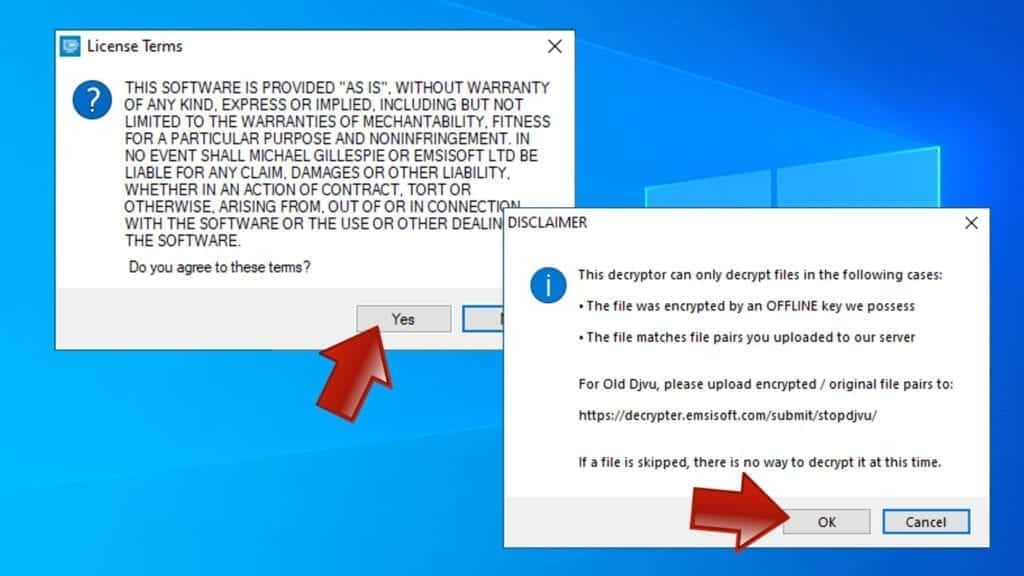
- The tool will automatically include C:// disk as a location to decrypt. The file recovery tool will prepopulate the locations to scan, including connected data storage drives or network drives. Click Add folder if you wish to add additional locations.
In Options tab, you can choose to keep encrypted file copies. We recommend leaving this option selected, especially if you do not know if the decryption tool will work.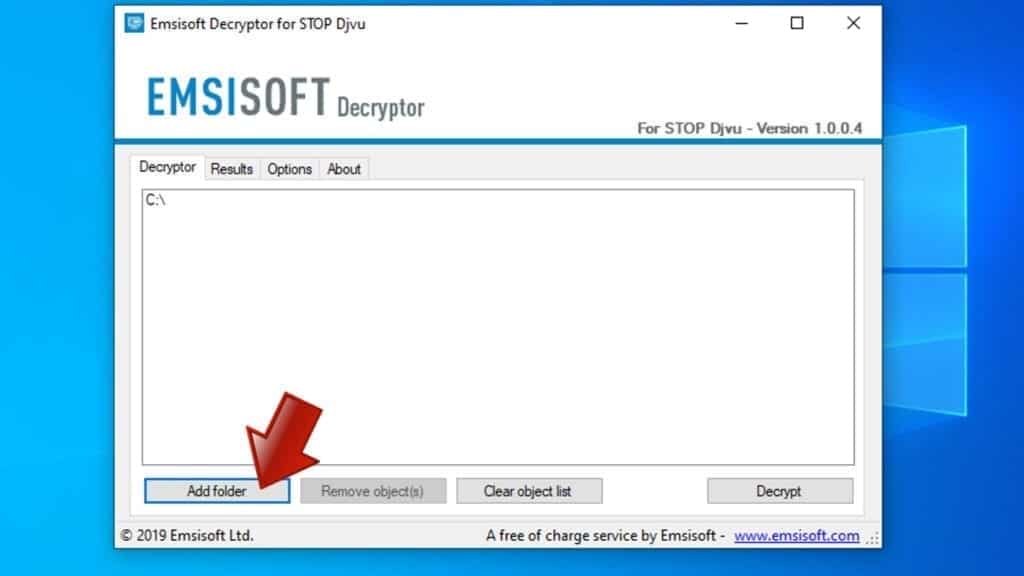
- Click Decrypt to start restoring REJG files. You will see the progress in the Results tab. Here, you can see messages from the tool, such as whether the decryption procedure is successful, or you need to wait for an update.
You might also be informed that online key was used to encrypt your files. In such case, the decryption tool won't work for you, and the only way to recover your files is to use a data backup.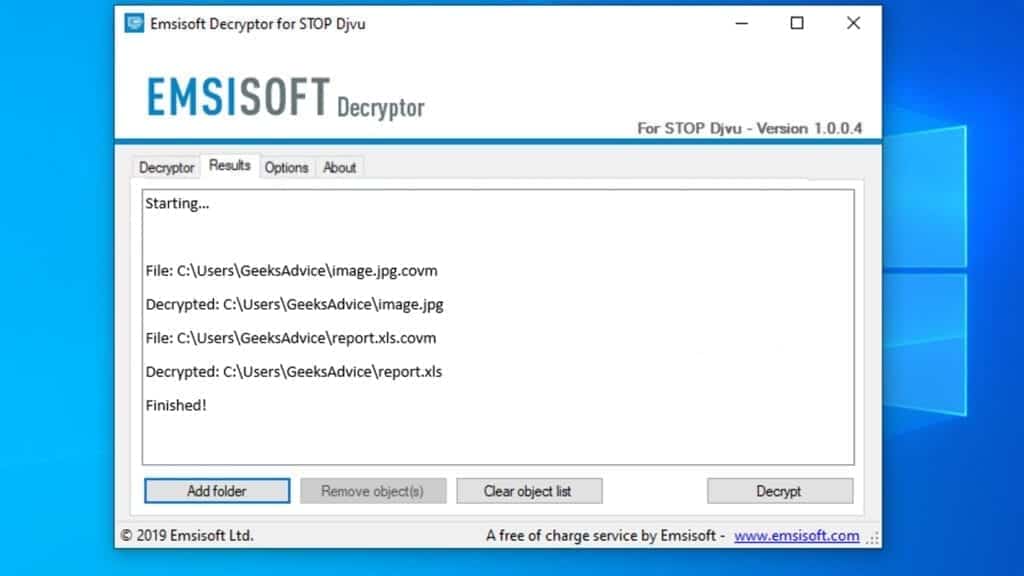
Meanings of decryptor's messages
The REJG decryption tool might display several different messages after failed attempt to restore your files. You might receive one of the following messages:
Error: Unable to decrypt file with ID: [example ID]
This message typically means that there is no corresponding decryption key in the decryptor's database.
No key for New Variant online ID: [example ID]
Notice: this ID appears to be an online ID, decryption is impossible
This message informs that your files were encrypted with online key, meaning no one else has the same encryption/decryption key pair, therefore data recovery without paying the criminals is impossible.
Result: No key for new variant offline ID: [example ID]
This ID appears to be an offline ID. Decryption may be possible in the future.
If you were informed that an offline key was used, but files could not be restored, it means that the offline decryption key isn't available yet. However, receiving this message is extremely good news, meaning that it might be possible to restore your REJG extension files in the future. It can take a few months until the decryption key gets found and uploaded to the decryptor. We recommend you to follow updates regarding the decryptable DJVU versions here. We strongly recommend backing up your encrypted data and waiting.
Report Internet crime to legal departments
Victims of REJG ransomware virus should report the Internet crime incident to the official government fraud and scam website according to their country:
- In the United States, go to the On Guard Online website.
- In Australia, go to the SCAMwatch website.
- In Germany, go to the Bundesamt für Sicherheit in der Informationstechnik website.
- In Ireland, go to the An Garda Síochána website.
- In New Zealand, go to the Consumer Affairs Scams website.
- In the United Kingdom, go to the Action Fraud website.
- In Canada, go to the Canadian Anti-Fraud Centre.
- In India, go to Indian National Cybercrime Reporting Portal.
- In France, go to the Agence nationale de la sécurité des systèmes d’information.
If you can't find an authority corresponding to your location on this list, we recommend using any search engine to look up "[your country name] report cyber crime". This should lead you to the right authority website. We also recommend staying away from third-party crime report services that are often paid. It costs nothing to report Internet crime to official authorities.
Another recommendation is to contact your country's or region’s federal police or communications authority.
Frequently Asked Questions
You can only open REJG files if you have the decryption key, or if you were affected by offline encryption type.
To figure out whether you were affected by offline encryption, please go to C:/SystemID/PersonalID.txt and see if the string inside of it ends in t1. You can also try using Emsisoft Decryptor for STOP/DJVU.
Please follow the guidances provided by the official REJG decryption tools and believe what they say. If they say it is impossible to decrypt, it really is so. There is no magic tool or human capable of decrypting your files hiding somewhere. Encryption is a technique created to be nearly impossible to decrypt without a special private key (held by the criminals).
We advise scanning with anti-virus, anti-malware, malware removal tools or software like RESTORO to eliminate virus damage on the system. If you do not trust using a single tool, try running one after another. However, we do not recommend keeping several security programs on a computer at once as they can interfere with each other's work.
Beware of fake REJG decryption tools circulating around the web. Cyber criminals are uploading them to various shady websites, also might be promoting them via suspicious Youtube videos. These programs can infect your computer even more heavily (Trojans, miners, etc.). We suggest being extremely cautious around the web. If there will be an official STOP/DJVU decryption tool available, it will be widely discussed in public media.

Norbert Webb is the head of Geek’s Advice team. He is the chief editor of the website who controls the quality of content published. The man also loves reading cybersecurity news, testing new software and sharing his insights on them. Norbert says that following his passion for information technology was one of the best decisions he has ever made. “I don’t feel like working while I’m doing something I love.” However, the geek has other interests, such as snowboarding and traveling.

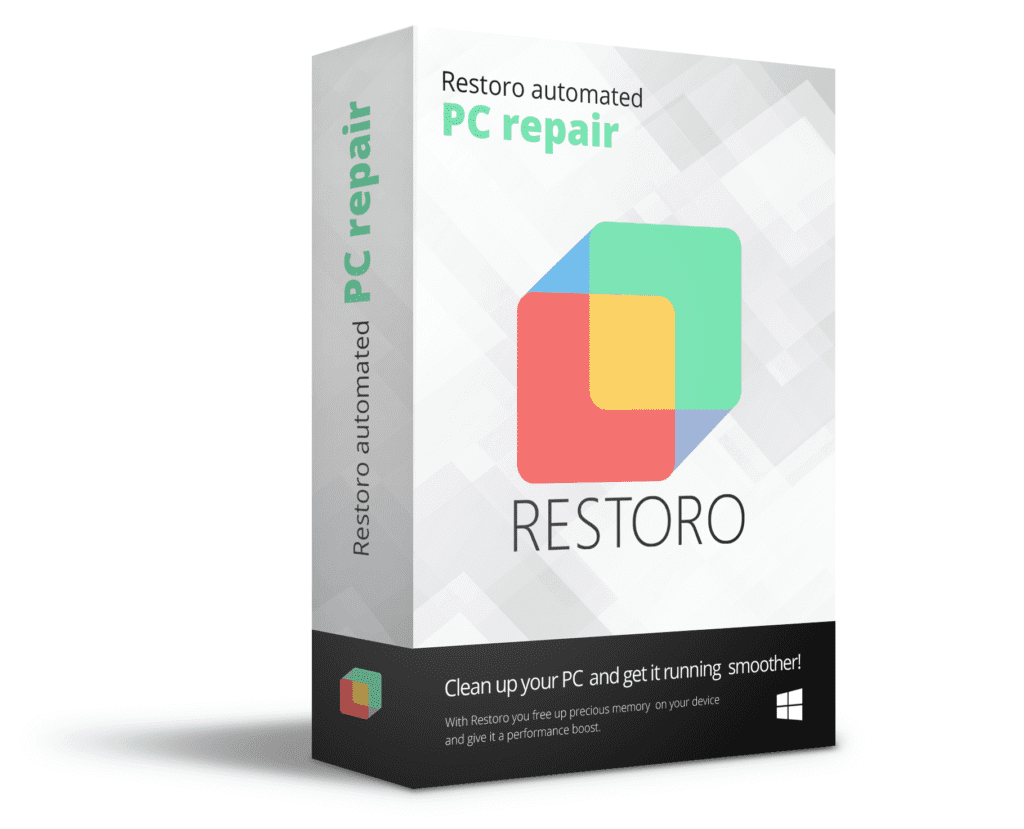
Leave a Reply